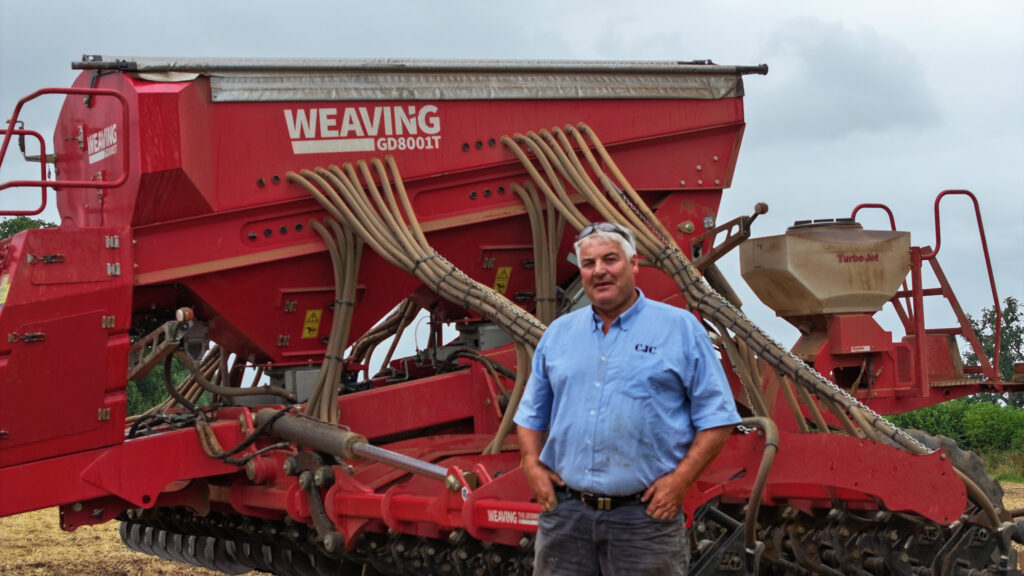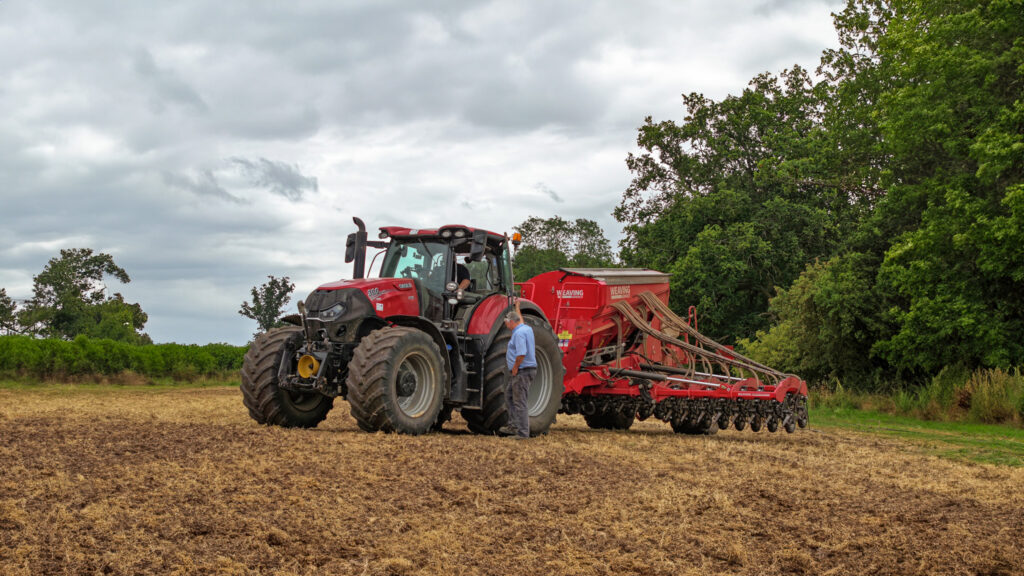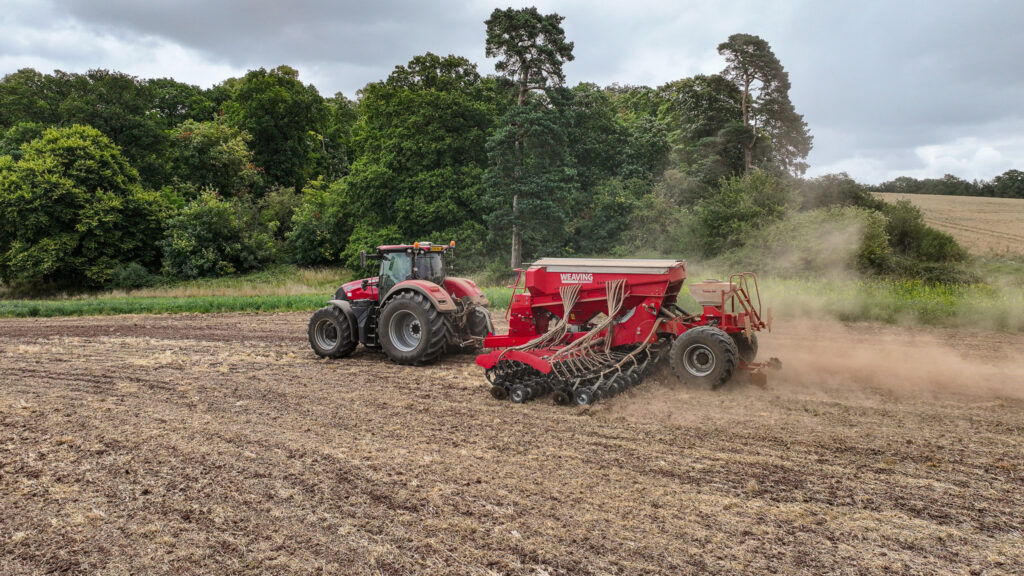Contract farming 3,500 acres around the parish of Upton Snodsbury, just east of Worcester, Colin Collins also runs 1,000 acres in his own right.
Having embarked on his ‘regen journey’ some six years ago, Colin grows a mix of arable crops, including oilseed rape, winter and spring wheat, winter beans, cover crops and maize. He also keeps 100 suckler cows and fattens store lambs on cover crops.
Colin was driven towards a regenerative system by the benefits it could supply in terms of improved soil organic matter and an increase in his soil’s carbon storage ability and as time has progressed, he has also seen improvements in yields.
Previously running two six-metre combination drills, Colin contacted Weaving when looking for a direct drill to fit into his new system, opting for the GD6401T G&F.
Colin says: “We moved over to a regen system because I believed it was just the ethical thing to do. We needed the appropriate kit to make the move and Weaving produced the best drill of its type.
“The drill itself was cost effective as a purchase as well as any future wearing parts. The factory is also local to me, which made it very convenient.”
With soil types ranging from sand to heavy clay, Colin also purchased a Weaving LD top-soiler to run in front of the drill to help tackle any compaction.
Colin says: “With use of the GD drill and the LD, we started to gradually wean ourselves on to the regen system, mindful that too much change too quickly could result in yield penalties.”

As part of his system, every single acre of ground receives some sort of organic manure whether muck, sewage sludge or digestate and has several agreements with dairy farmers and digestor owners to ensure supply, while also being cautious not to over apply.
Colin says: “With the LD also in our armoury, we run a hybrid system of low disturbance subsoiling and direct drilled, or solely direct drilled. The LD helps to keep the soil structure right in the case of any compaction without disturbing dormant weed seeds. The LD also helps to limit erosion.”
Both the GD and LD are economical in terms of fuel and maintenance costs he explains, adding the power requirement upfront is less than his previous combination drills enabling him to downsize from Case IH Magnums to Case Pumas and Optum.
He adds: “They are easy to fold and unfold, simply calibrated and are also easy to load with seed and my drivers really like them.”
Two years ago, Colin added the purchase of a Weaving Sabre tine drill to his fleet for drilling crops such as winter beans and turnips in wetter autumn soils.
Colin says: “The purchase of the Sabre brings a new level of flexibility to our system. It is better in the wet than the GD. We compaction test the fields and will also use the LD with the Sabre if there is compaction or capping.”
Colin also comments the customer service from Weaving is extremely good.
He says: “We were having trouble with stones getting in the discs and the discs jamming, but we contacted Weaving who fitted stone guards, which now come as standard on all GD drills. They are extremely helpful and good to deal with. If there is a problem, they will sort it.”

About the GD6401T G&F – BOX
The GD drill is the outcome of continuous refinement and development, to create a simple yet precise seed drill. It features the patented and future proofed GD coulter, which provides remarkably low soil disturbance, has a very low draught requirement along with an excellent service life. The GD drill excels in its adaptability to satisfy all drilling systems, soil types and conditions.
- 6.4m working width
- 7ha hourly output
- 166mm row spacing
- 240kg minimum coulter pressure
- 38 coulters
- 180 minimum horsepower requirement
- Folding frame
- 8-12km working speed
- 2.99m road transport width
- 5,000 litre hopper capacity
- Hydraulic brakes


